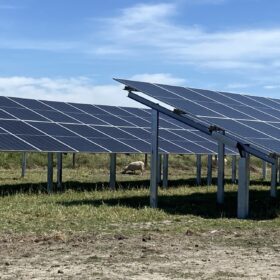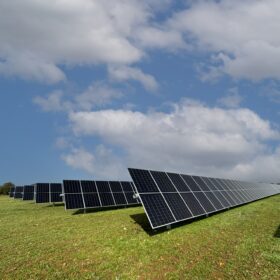The invitation for distribution network service providers (DNSPs) to participate in VisNet View trials coincides with the release of Ausgrid, Endeavour Energy and Essential Energy’s NSW Distribution System Plan Opportunities Report. DNSPs currently lack visibility of the low-voltage (LV) network and there is an urgent need for distribution networks to optimise the integration of Consumer Energy Resources (CER) such as rooftop solar, batteries to electric vehicles.
As CER adoption accelerates across Australia, DNSPs are increasingly reliant on grid-edge intelligence to manage and support its participation. Given that around 80% of Australia’s network is built with overhead cables, improving fault detection, speeding up restoration and gaining accurate hosting-capacity insights is now critical to optimising CER while Australia awaits the delivery of major transmission projects.
Neil Davies, Managing Director of EA Technology Australia said, “Australia relies on overhead cables that support the distribution of grid electricity and the bi-directional flow of energy from rooftop solar, batteries to electric vehicles. The need for grid-edge intelligence supports DNSPs who need visibility of the grid to support flexible export programs and CER participating in flexibility markets.”
“VisNet View provides asset owners and operators of low-voltage networks with extensive grid-edge intelligence that allow them to make informed operational decisions, detect future capacity challenges and plan maintenance of their networks more effectively.”
Building on the success of the VisNet Hub, which now occupies approximately one in eight UK ground-mounted substations, VisNet View will bring actionable insights to the overhead low voltage lines.
While some existing overhead LV monitoring technologies purely measure the aggregated values at the pole-mounted transformers, VisNet View monitors at the feeder level, granting overhead LV asset owners access to real-time, detailed insights network wide.
Data collected by the VisNet View includes phase and neutral currents per phase, phase to neutral voltages, real, reactive and apparent power per phase, total harmonic distortion, pole angle changes, and pre-fault and fuse blow events – all of which can be viewed via VisNet’s DetectPro UI.
With VisNet View, LV asset owners and operators can visualise and interrogate the data processed at the grid-edge, allowing them to prioritise repairs, reduce unnecessary engineer call outs, and identify assets that require preventative maintenance. Engineered to withstand harsh conditions from –30°C to +65°C, the VisNet View is ideally suited to Australia’s climate-vulnerable and geographically dispersed grid.
DNSPs interested in participating in the early field trial can contact VisNet from EA Technology to secure a deployment site in 2026.






By submitting this form you agree to pv magazine using your data for the purposes of publishing your comment.
Your personal data will only be disclosed or otherwise transmitted to third parties for the purposes of spam filtering or if this is necessary for technical maintenance of the website. Any other transfer to third parties will not take place unless this is justified on the basis of applicable data protection regulations or if pv magazine is legally obliged to do so.
You may revoke this consent at any time with effect for the future, in which case your personal data will be deleted immediately. Otherwise, your data will be deleted if pv magazine has processed your request or the purpose of data storage is fulfilled.
Further information on data privacy can be found in our Data Protection Policy.